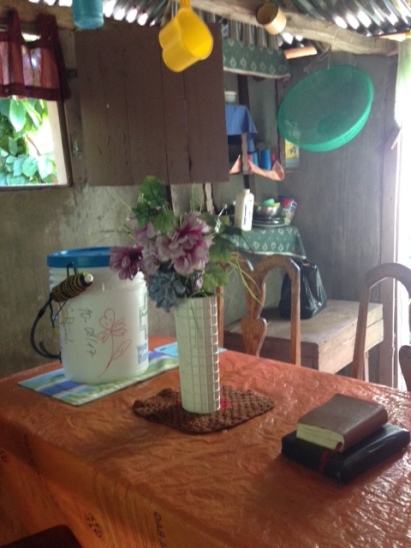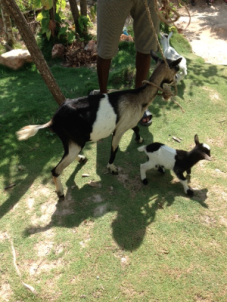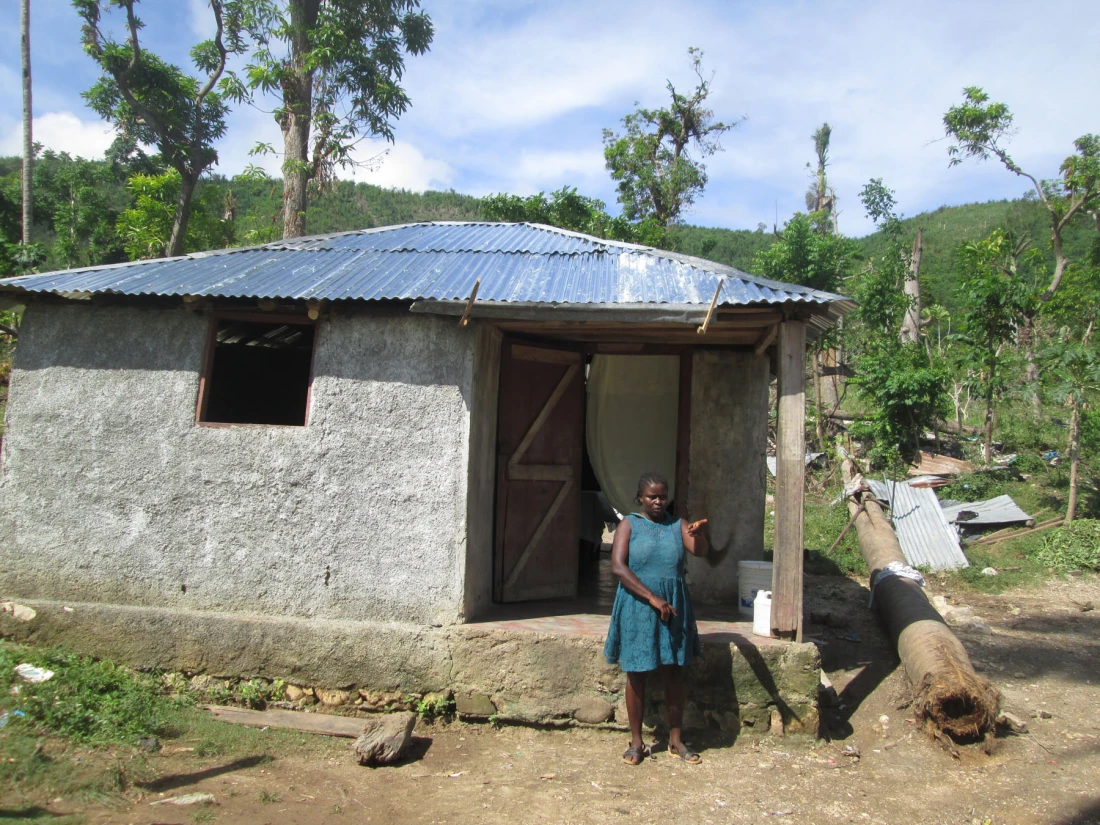The Haitians have experienced multiple natural disasters as well as government situations that hinder economic progress and threaten their wellbeing in a variety of ways. To help them combat these obstacles, Haitian Connection sponsors several programs:
Women’s Houses
When Haitian Connection was founded in 2005, our primary efforts were directed at providing human and physical resources to a variety of educational projects. With the January 12, 2010, earthquake, our focus changed somewhat, and we started our project of building houses for women and their children. The idea is to provide women and their children with a secure, safe place to live. Nobody can take that away from them, and it is a life-changing gift that the women never dreamt could become a reality.
 Each house has three rooms, a latrine, and a veranda. Eight to ten people find employment during the construction of the home. It allows the women to start a small cottage-type industry, and, most important to them, with the money earned they can now send their children to school. In 2018, we will add the additional gift of a biosand filter which will provide the family clean drinking water year round.
Each house has three rooms, a latrine, and a veranda. Eight to ten people find employment during the construction of the home. It allows the women to start a small cottage-type industry, and, most important to them, with the money earned they can now send their children to school. In 2018, we will add the additional gift of a biosand filter which will provide the family clean drinking water year round.
Microcredit
 With our housing project, we provide women and their children with a safe place to live, but we also see the need to offer them some income generating activities. With a grant from the Espera Fund of Mary’s Pence, we have started two microcredit groups for the communities in which we build houses. The women’s groups in both communities determine the rate of interest borrowers will pay and maintain an account for the group with Fonkoze. This is a rolling fund; as loans are paid back, funds become available for further loans.
With our housing project, we provide women and their children with a safe place to live, but we also see the need to offer them some income generating activities. With a grant from the Espera Fund of Mary’s Pence, we have started two microcredit groups for the communities in which we build houses. The women’s groups in both communities determine the rate of interest borrowers will pay and maintain an account for the group with Fonkoze. This is a rolling fund; as loans are paid back, funds become available for further loans.


The women have established their own micro-enterprises; they sell foods such as flour, oil, spaghetti, bread, and soft drinks, as well as lumber, locally brewed rum, and cosmetic items. With their micro enterprises, they feel they have received more respect in the home, and they are able to send all their children to school.

Goat Project
 Haitians need to restore the livestock that had been completely wiped out by hurricane Matthew. We primarily focus on women, so we are working on this with a women’s group in Paroty, a community outside of Jeremie. We provided the funds for the purchase of 30 goats. An official contract was signed, and the goats are already multiplying.
Haitians need to restore the livestock that had been completely wiped out by hurricane Matthew. We primarily focus on women, so we are working on this with a women’s group in Paroty, a community outside of Jeremie. We provided the funds for the purchase of 30 goats. An official contract was signed, and the goats are already multiplying.
Literacy Program
Basic reading and writing skills are necessary for any progress, especially for women who are involved in commercial activities. We began our literacy program in Latiboliere, one of the communities where we build houses for women and their children and also have a micro-credit program. Three women from the women’s group serve as instructors for that program. Now there is great joy when a woman conducting business can sign her own name.
Summer Camp
Haitian Connection is holding annual summer camps for children in the neighborhood of the Haitian Connections multipurpose center in Jeremie. We play games, encourage teamwork, promote a love of reading, and engage the kids in arts and crafts. We have them make their own lunch, and for our last day we dress up, give out certificates and have an America style lunch of hot dogs and fries.



Child-to-Child Project
In order to address the special needs of children, we have added a program that is especially geared towards them. Child-to-Child is an award-winning program designed to promote child health and safety through children (http://www.child-to-child.org/). It began in 1979, which was the International Year of the Child, and has spread to over 70 countries worldwide. In 1993, it won the highest award given by UNICEF in recognition of what the program has accomplished to empower children, celebrate their role in development, and promote child health. The program is based on a firm and unwavering belief in the ability of children to affect change. In Child-to-Child, children learn to promote health to other children, their families, and the community.
Child-to-Child methodology has been adapted to help children assist other children to cope with traumatic situations. A CtC publication on children affected by natural disasters outlines specific activities that children can do to help other children, including engaging younger children in games, songs, storytelling, and dancing. Children are encouraged to create songs or skits with simple health messages that recognize the need for both mental and physical well-being. Through Child-to-Child activities, children feel empowered and confident that they can play a part in helping their families and communities recover from disasters and rebuild their lives. The methodology celebrates children’s remarkable resilience when coping with disaster and trauma.
The Jeremie Child-to-Child program has trained about 25 teachers and community leaders in the program methodology. Some of the feedback received after the training:
- “I learned that children are very important.”
- “A lot of important things can be done without a lot of money.”
- “I discovered that games are good and very instructive.”
- “The facilitator used a lot of real life examples and helped me understand.”
- “I learned that children can intervene by themselves and they can work well and they can learn.”
- “I would like for the seminar to take roots all over Haiti.”












